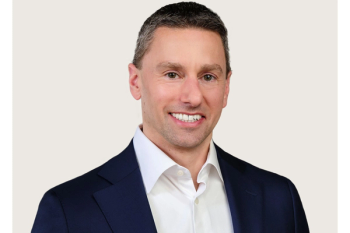
Matthew’s Story: Finding the Right Treatment
Matthew and his parents share insights into the challenges they experienced while trying therapies to treat his alopecia.
Jamie: As far as how many different therapies we tried, we started as conservative as possible. We went with certain topical steroids and topical minoxidil. We did that for, I want to say 4 to 5 months, maybe even a little bit longer, then we decided this isn’t working. We need an oral, a systemic medication, something stronger. Also, he’s 12 and I wasn’t ready to put something in him that had higher risk, so we started with methotrexate which our doctor had told us had been around for over 50 years as relatively safe, has minimal adverse effects. We tried that. It really didn’t work. During that time, we started Xeljanz [tofacitinib] the following June, it was an evolution where we were like Tony said losing hope and watching Matthew decline with respect to his mental health. That risk-benefit analysis sort of changed for us, which led us to the point where we were even comfortable considering going to Dr King [Brett King, MD, PHD, Yale School of Medicine, Middlebury, Connecticut]. When we saw him, he made me feel so comfortable. I’ll never forget what he said to me. He said, “Xeljanz, it’s not without risk, but it's not risky.” That made a lot of sense to me. It was something that I could relate to and Tony as well, and it just gave us so much hope, and then we were like, let’s do this.
As far as a burden on us of having to take Matthew to the doctor, I would say the burden was more on Matthew. I felt bad having to drag him around to all these providers. At some point you’re like, this is just a kid. I want to minimize this. I want him to go play sports, hang with his friends, do whatever he wants to do. I don’t want to be dragging him to doctors. I’m thinking, play video games. One of the therapies that we had considered was phototherapy, but to do that, you had to go 3 times a week, at least pretty much forever. The cost of the impact on his life and his brothers’ lives. I should mention them. They’ve been amazing supporters of Matthew throughout this time and our family. They’ve been real troopers. It was too much of a price to pay. An imposition on his life as a 12-year-old boy. So that was my concern.
Tony: There’s nothing a parent won’t do for their child. We had to feel comfortable, too. I withdrew personally, and I know Matthew withdrew from friends, from things that he normally would’ve otherwise done during that time. You weren’t comfortable doing it.
Matthew: I was not comfortable.
Tony: It was things like wearing a hat every day, which may seem superficial, but it was more than that. It was the mental well-being of not being able to wake up in the morning and feel like you can do any tasks. The greatest gift a parent can give their kids, I believe, is confidence. Matthew lost that confidence, and it was heartbreaking as a parent to see that. There was not a rock that we were not going to turn over and try to find a solution. The burden of going to the doctors, I don’t know that we didn’t look at it. It was hoping each time that we went to see a doctor. The problem was most everything we tried did not work until we went and saw Dr King, and we could try the JAK [Janus kinase] inhibitor and Matthew had success with it. It changed his life. It changed his brothers’ lives and it changed Jamie and I, our lives. You want your kid to not have any obstacles as they grow up, as they start dating, as they start applying for jobs. Those are things that you think about as a parent and to not have to think about that now, as we’re sitting here today, so lucky.
Transcript lightly edited for clarity.
Newsletter
Stay ahead of policy, cost, and value—subscribe to AJMC for expert insights at the intersection of clinical care and health economics.





































